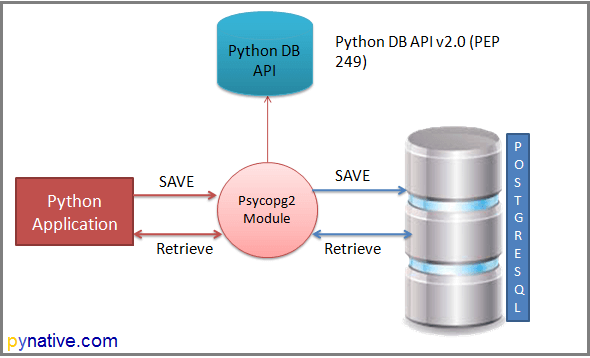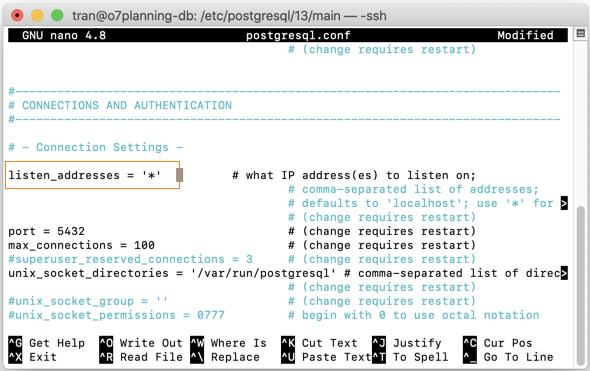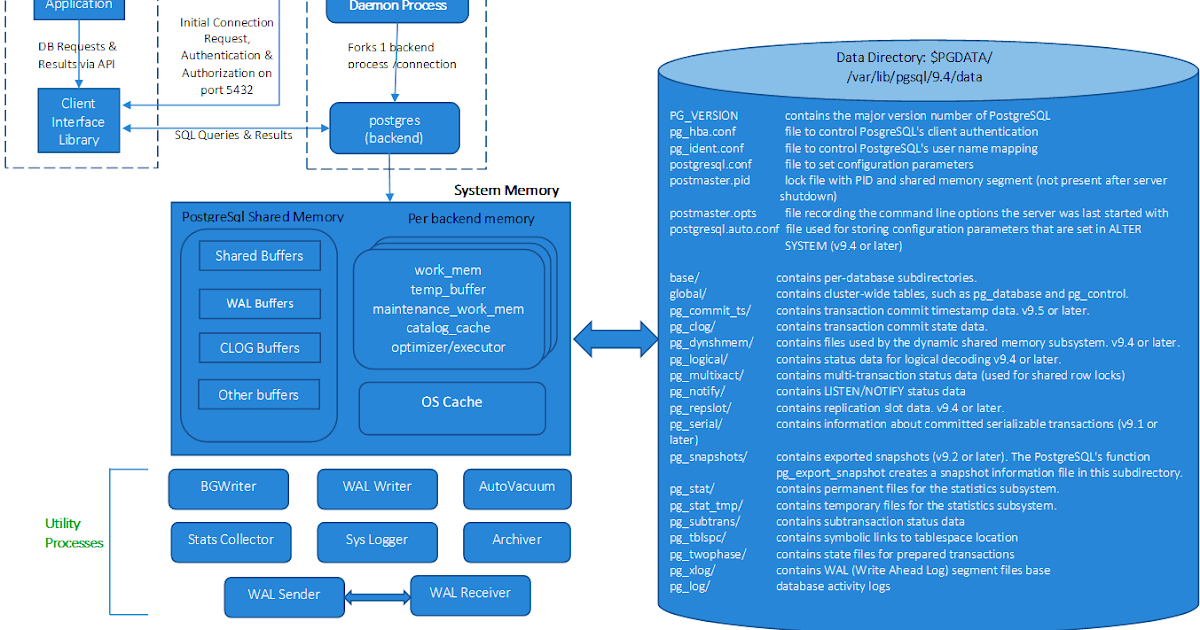

- #Configure postgresql unix socket drivers
- #Configure postgresql unix socket driver
- #Configure postgresql unix socket password
- #Configure postgresql unix socket download
WebStorm will introspect and show them.įor more information about working with database objects in WebStorm, refer to Database objects. To see more schemas under your new data source node, click the N of M button and select the ones you need. įor more information about the Database tool window, see the corresponding reference topic. If you also want to work with other schemas, in the Schemas tab, select them for the introspection.įind your new data source in the Database tool window ( Alt+1). (Optional) By default, only the default schema is introspected and available to work with. In case of any connection issues, refer to the Cannot connect to a database page. To do that, click the Test Connection link at the bottom of the connection details area.
#Configure postgresql unix socket password
In User and Password fields, specify your user credentials.Įnsure that the connection to the database can be established using the provided details.
#Configure postgresql unix socket driver
Double-click the Value cell and type your server timezone (for example, UTC).įrom the Driver list, select the driver that you created earlier (refer to Step 4). On the Advanced tab, find the serverTimezone parameter in the list of options.
#Configure postgresql unix socket download
If there is no Download missing driver files link, then you already have the required drivers. For more information about connecting to a database with your driver, refer to Add a user driver to an existing connection.
#Configure postgresql unix socket drivers
You can also use your drivers for the database instead of the provided ones. The IDE does not include bundled drivers in order to have a smaller size of the installation package and to keep driver versions up-to-date for each IDE version. You can find the downloaded JDBC drivers in the WebStorm configuration directory. For a direct download link, refer to the JetBrains JDBC drivers page. Click this link to download drivers that are required to interact with a database. Navigate to Data Source and select MySQL.Ĭheck if there is a Download missing driver files link at the bottom of the connection settings area. In the Database tool window ( View | Tool Windows | Database), click the New icon ( ) in the toolbar. You can do this using one of the following ways:įrom the main menu, navigate to File | New | Data Source and select MySQL. To connect to the database, create a data source that will store your connection details. Double-click the Value cell and type the path to your socket file (refer to Step 1). Scroll down to the end of the property list, double-click the cell and type junixsocket.file. On the Advanced tab, find the socketFactory property, double-click the Value cell, and change the value to .AFUNIXDatabaseSocketFactory. While pressing Control, select the following files: In the file browser, navigate to a folder with third-party libraries (refer to Step 3).


On the General tab, click the Add button ( ) and select Custom JARs. Alternatively, press Control+D.Ĭhange the name of the duplicated driver (for example, MySQL socket). In the Drivers section, click the MySQL driver and click the Duplicate button. In the Database tool window ( View | Tool Windows | Database), click the Data Source Properties icon. You can open data source properties by using one of the following options: Junixsocket-native-common-2.3.2.jar, if you have a custom architecture try junixsocket-native-custom-2.3.2.jar You need to add the following files from the lib directory to the MySQL driver in WebStorm: For more information about this limitation, refer to Connecting Using Unix Domain Sockets at .ĭownload the latest release from the junixsocket repository at (for example, junixsocket-dist-2.3.).Įxtract the downloaded archive. To enable socket connection, you need to download third-party libraries. The Connector/J driver does not natively support connections to MySQL Servers with Unix domain sockets. Type a password for your root user and press Enter.

In the command line, run the following command: mysql -u root -p -S /var/run/mysqld/mysql.sock. Check the Unix socket connection from the command line Mysql -u root -p -h 127.0.0.1 -e "select a password for your root user and press Enter.


 0 kommentar(er)
0 kommentar(er)
